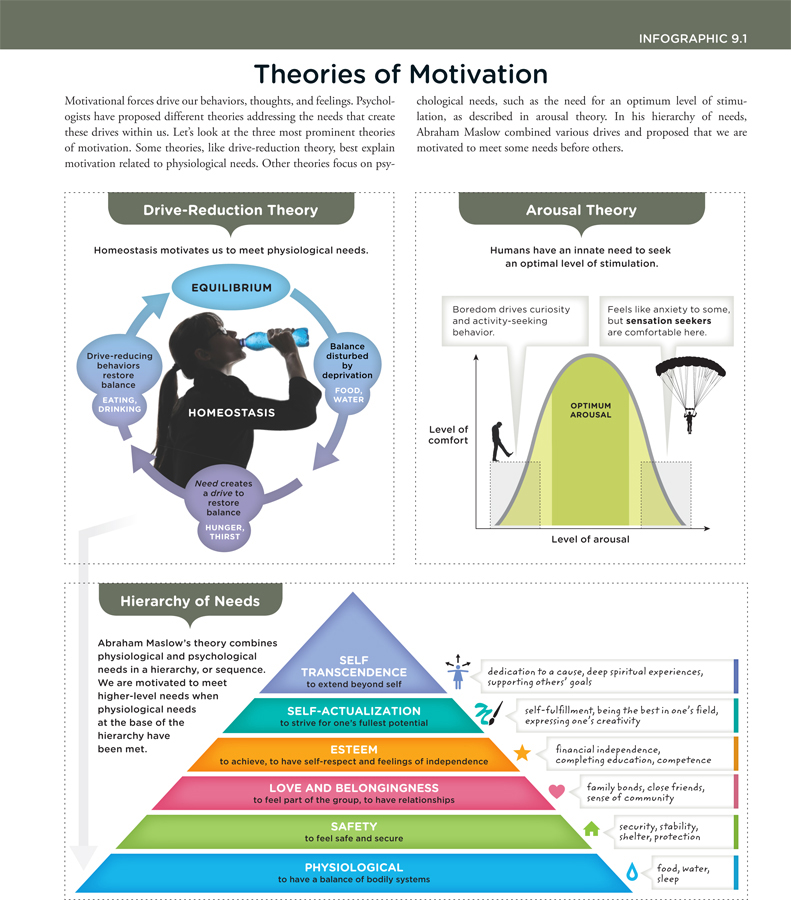Chapter 1. Theories of Motivation
Infographic
Scientific American: Psychology
Infographic Activity 9.1: Theories of Motivation
Theories of Motivation

Motivational forces drive our behaviors, thoughts, and feelings. Psychologists have proposed different theories addressing the needs that create these drives within us. Let’s look at the three most prominent theories of motivation. Some theories, like drive-reduction theory, best explain motivation related to physiological needs. Other theories focus on psychological needs, such as the need for an optimum level of stimulation, as described in arousal theory. In his hierarchy of needs, Abraham Maslow combined various drives and proposed that we are motivated to meet some needs before others.
Click the image to enlarge.
Click "Next" to continue.
1.1 Quiz
1. Ever since he was old enough to go for the first time, Casey has been obsessed with skydiving. There is nothing he loves more than the adrenaline rush he gets when he jumps out of a plane and freefalls through space! He has decided to become a skydiving instructor so that he can turn his passion into a career. The fact that Casey likes getting his body all charged up and out of balance with an adrenaline rush would be a significant problem for which theory of motivation?
| A. |
| B. |
| C. |
| D. |
2. Which humanistic theorist is credited with proposing the hierarchy of needs?
| A. |
| B. |
| C. |
| D. |
3. Pierce has spent the last several years acting as a mentor at the local Boy’s Club. He takes great pleasure in helping young men who come from disadvantaged backgrounds find their way to success and good decisions. His wife sometimes asks him why he spends so much time at the Club, and told her, “I just like doing something that helps others and doesn’t feel selfish.” According to the hierarchy of needs, Pierce is operating at the ________ level.
| A. |
| B. |
| C. |
| D. |
4. In the arousal theory of motivation, it is suggested that all humans have a(n) ________ arousal zone that determines their preferred levels of activity.
| A. |
| B. |
| C. |
| D. |
5. According to the drive-reduction theory, ________ motivates us to meet and satisfy physiological needs.
| A. |
| B. |
| C. |
| D. |
6. Leonard is currently engaging in activities that will satisfy the lowest level on the hierarchy of needs. Which of the following activities might Leonard be doing?
| A. |
| B. |
| C. |
| D. |
Activity results are being submitted...